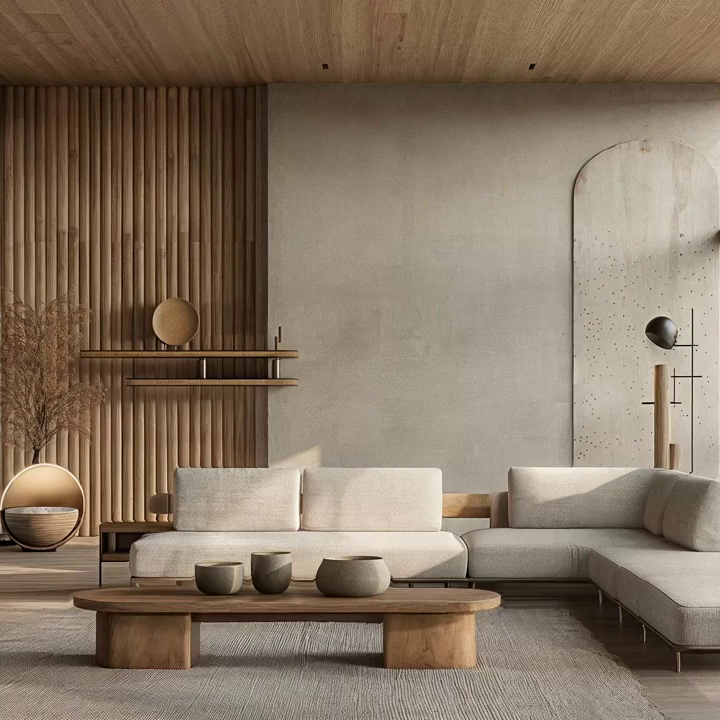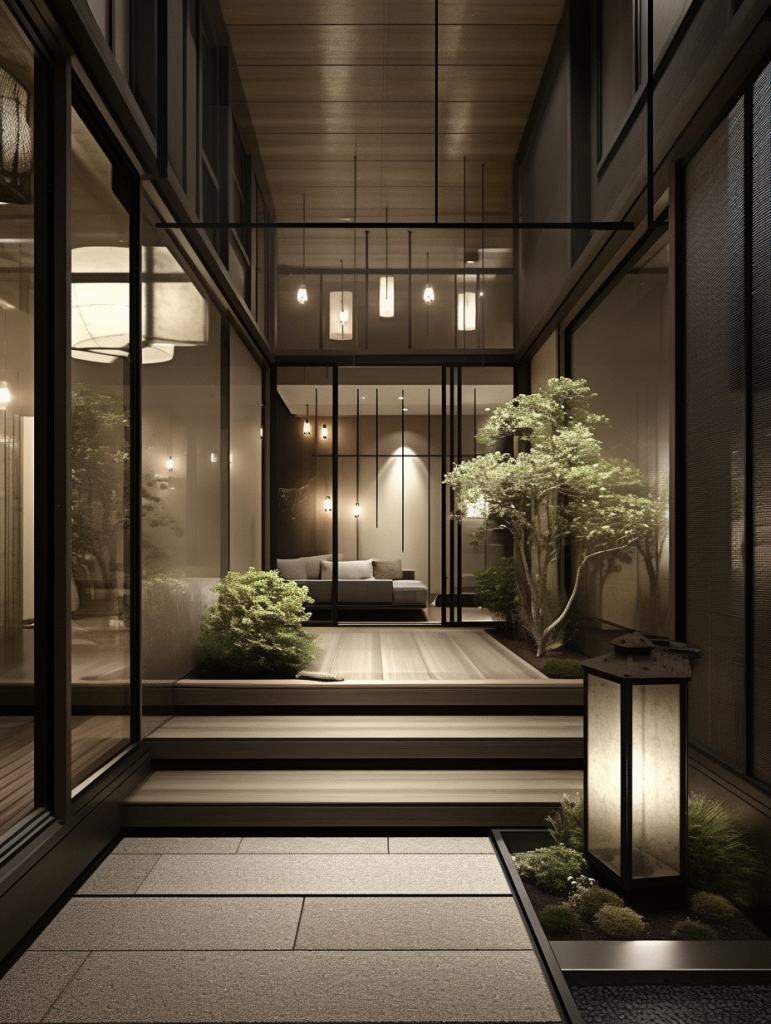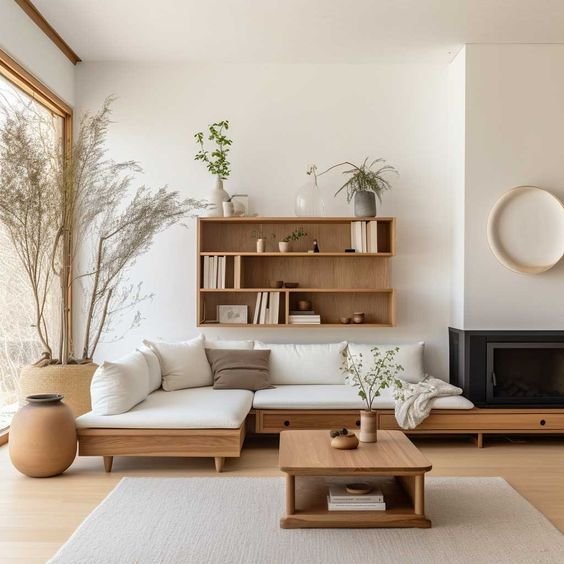Introduction
The Japandi living room design is a harmonious blend of Japanese minimalism and Scandinavian functionality. This design philosophy combines the warmth of Scandinavian coziness with the zen-like calm of Japanese simplicity, making it perfect for modern living rooms that seek tranquility and balance. As more people gravitate towards minimalistic yet comfortable interiors, Japanese Design has become a top trend in interior design.
Japandi living rooms offer not only aesthetic appeal but also a sense of mindfulness. They focus on sustainable materials, clean lines, and natural elements, creating a space that feels both inviting and serene. Whether you’re looking to create a calm sanctuary in your home or just wish to refresh your living room, these Japandi design ideas will inspire you.
Follow us on Pinterest
Understanding Japandi Design and its Benefit
Japandi design is more than just a trend; it’s a lifestyle. It marries the best of two worlds: Japanese aesthetics and Scandinavian functionality. The Japanese Wabi-Sabi concept, which emphasizes beauty in imperfection, blends with Scandinavian hygge, which prioritizes warmth and coziness. Together, they form an interior design philosophy that is calming, practical, and elegant.
Key Features of Japandi Living Room Design:
- Minimalism with Purpose: Every item in a Japandi living room has a functional purpose. There’s no room for clutter, only for items that are necessary or meaningful.
- Natural Materials: Japandi interiors focus on natural materials like wood, bamboo, stone, and rattan, making the space feel more connected to nature.
- Neutral Color Palette: Calm, muted tones dominate, such as beige, grey, and soft greens, giving the living room a peaceful and sophisticated vibe.
- Clean Lines and Low Furniture: Furniture pieces are often low to the ground, mirroring the simplicity of Japanese interiors while keeping the space open and airy.
Benefits of Japandi Living Room Design:
- Calming Atmosphere: The neutral tones and natural materials create a peaceful environment, perfect for unwinding after a long day.
- Timeless Appeal: Japandi design’s emphasis on simplicity and functionality ensures that it won’t go out of style anytime soon.
- Sustainable Living: With its focus on eco-friendly materials and minimalism, Japandi supports sustainable living.
- Effortless Elegance: The combination of Scandinavian and Japanese influences brings a refined, understated beauty to any space.
12 Modern Japandi Living Room Designs
1. Neutral Palette with Wooden Accents

One of the hallmarks of Japandi design is the use of a neutral color palette, which is perfectly showcased in this living room. The soft beige walls and light wooden floors create a soothing backdrop, while the wooden coffee table and shelving add warmth. The low-slung furniture keeps the room feeling grounded and calm.
2. Open Space with Low Furniture

This living room embraces the Japandi principle of keeping things minimal with low, streamlined furniture. A simple wooden table paired with low armchairs creates a balanced aesthetic. The use of earthy tones, such as muted greys and browns, ensures a serene vibe, while large windows allow natural light to flood the space.
3. Mix of Textures

To avoid a sterile look, this Japandi living room incorporates a variety of textures. A plush rug, woven cushions, and wooden furniture provide depth to the minimalist design. The addition of rattan elements brings in a touch of nature, while the soft linen curtains complete the look, making the space feel cozy without sacrificing simplicity.
4. Scandinavian Soft Furnishings

In this living room, the Japandi influence leans more towards the Scandinavian side, with soft, cozy furnishings like woolen blankets and plush cushions. A minimalist sofa and wooden coffee table keep the look grounded, while the addition of throw pillows in muted tones creates a welcoming space that’s perfect for lounging.
5. Modern Japanese-Scandi Design

While Japandi design typically leans toward minimalism, the occasional bold accent can elevate the space. This living room uses a statement chair in dark wood and fabric to draw attention, breaking up the neutral palette while still adhering to Japandi’s clean lines. The result is a space that feels both modern and stylish.
6. Functional Storage Solutions

In keeping with the minimalist aesthetic of Japandi design, this living room makes use of clever, hidden storage solutions. Built-in shelves and minimalist cabinets offer plenty of space to store items out of sight, maintaining the room’s clean and uncluttered appearance.
7. Bamboo and Rattan Accents

For a touch of organic warmth, this Japandi living room features bamboo and rattan accents. From the rattan light fixtures to the bamboo side tables, these natural materials create a subtle connection to the outdoors, enhancing the room’s peaceful vibe.
8. Muted Monochrome

A monochrome color scheme can be calming, especially when executed in muted tones like soft greys and off-whites. In this living room, the monochrome palette is accented by wooden furniture and earthy accessories, ensuring that the space remains warm and inviting rather than cold and clinical.
9. Layered Lighting

Lighting plays a crucial role in Japandi design, and this living room demonstrates how layering light sources can enhance the mood. Floor lamps, pendant lights, and soft candles combine to create a warm, inviting glow that softens the clean lines of the room’s minimalist furniture.
10. Natural Materials for Warmth

The extensive use of natural materials, such as wood and stone, defines this natural Japandi decor. A wooden coffee table and stone fireplace serve as focal points, while soft linen cushions and wool throws bring a touch of Scandinavian coziness. The result is a space that feels both grounded and warm.
11. Open Shelving with Decorative Objects

Open shelving is another staple of Japandi style furniture. In this living room, carefully curated decorative objects like vases, books, and plants are displayed on simple wooden shelves. The arrangement is minimalist, but each item adds character without overcrowding the space.
12. Indoor Greenery for Serenity

Incorporating plants into you Japandi interior decor is a simple way to bring the outdoors in. This design pairs sleek, modern furniture with indoor plants to add freshness and life to the space. The plants’ green tones complement the neutral color scheme, enhancing the room’s calm atmosphere.
Follow us on Pinterest
Check out 10 Best Curtains for Living Room
FAQs
1. What is Japandi style in interior design?
Japandi is a combination of Japanese minimalism and Scandinavian functionality, blending the clean lines and simplicity of Japanese interiors with the cozy, warm feel of Scandinavian design. It emphasizes neutral color palettes, natural materials like wood and bamboo, and clutter-free spaces.
2. How do I create a Japandi living room?
To create a Japandi living room, start by choosing a neutral color scheme with soft tones like beige, grey, or muted green. Opt for low-slung furniture made from natural materials such as wood or rattan. Keep the decor minimal with clean lines and incorporate indoor plants to bring nature indoors. The key is to balance Japanese simplicity with Scandinavian coziness.
3. What colors are used in Japandi design?
In Japandi design, neutral colors are predominant. The palette typically includes shades of white, beige, soft grey, earthy tones, and muted greens. These colors help create a serene, calming environment, which is essential for Japandi’s minimalist aesthetic.
4. Why is Japandi design so popular?
Japandi design is gaining popularity due to its focus on minimalism, sustainability, and functional living. It offers a perfect balance between beauty and practicality, using natural materials and calming colors to create peaceful, clutter-free spaces. As people seek more mindful living environments, Japandi design resonates with those looking for simplicity and comfort.
5. What type of furniture is used in Japandi interiors?
Furniture in Japandi interiors is typically low to the ground, with clean, simple lines. Common materials include wood, bamboo, and rattan, all of which emphasize natural beauty. Upholstered pieces often have muted tones, and the design is minimal, focusing on functionality without excess.


